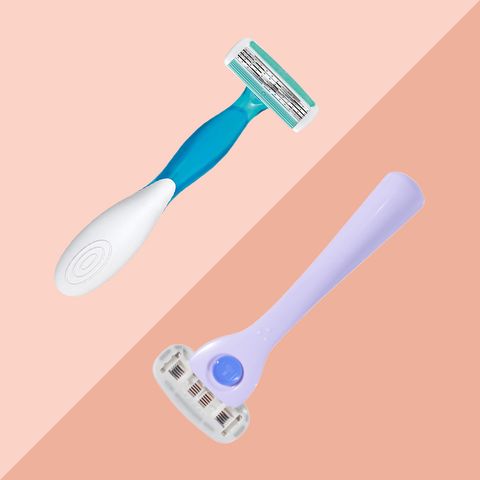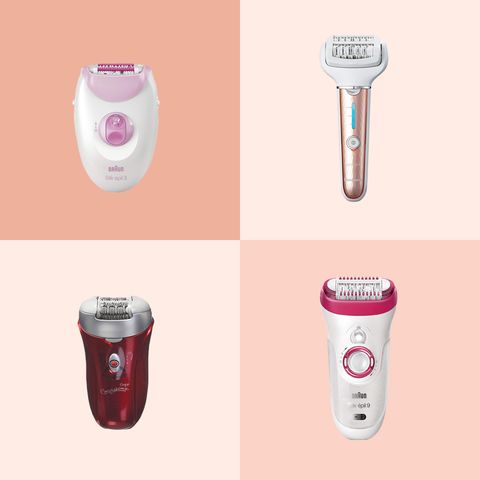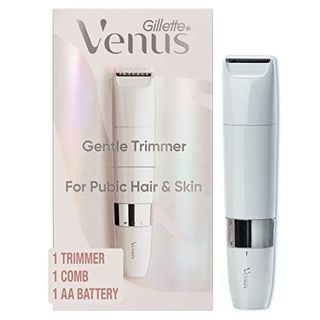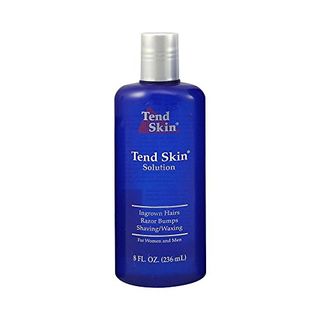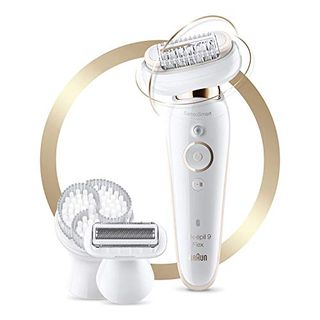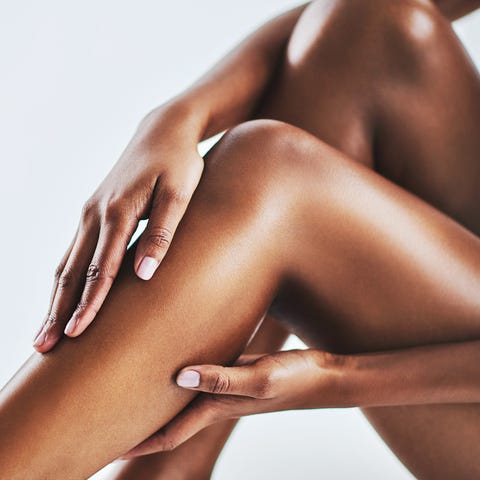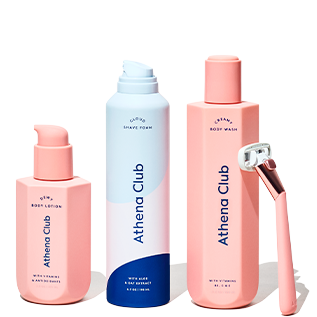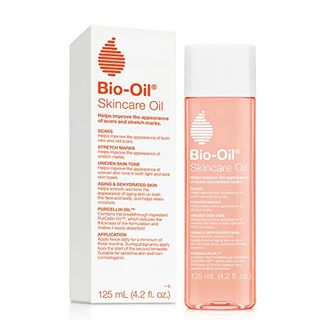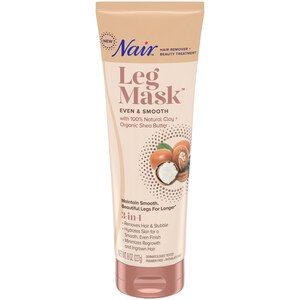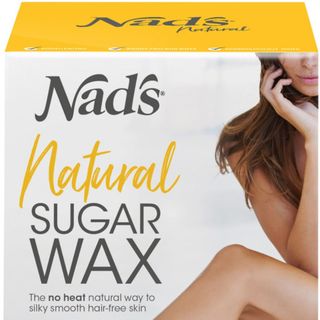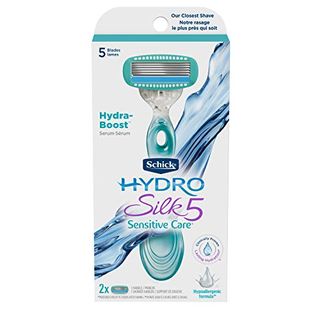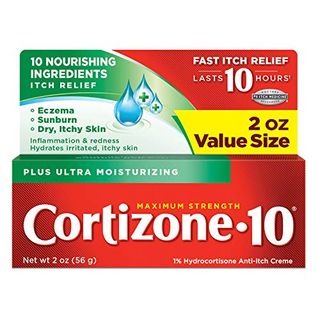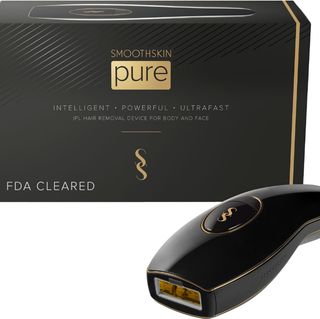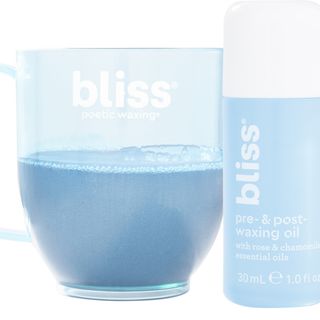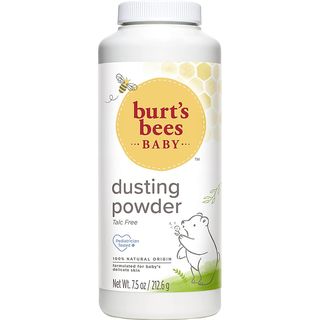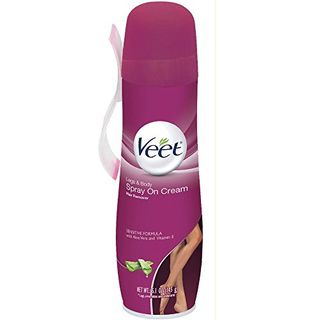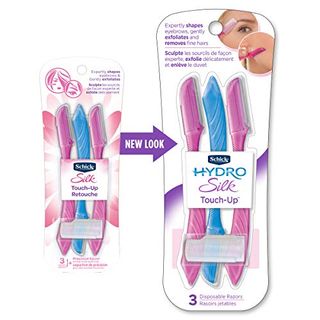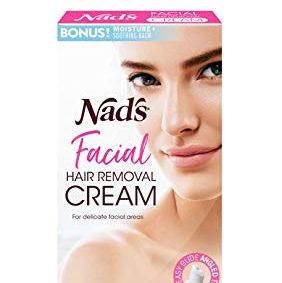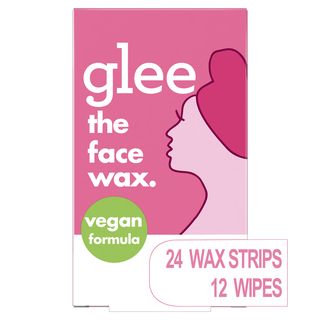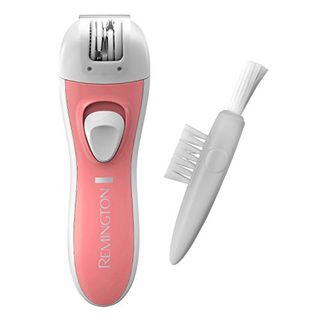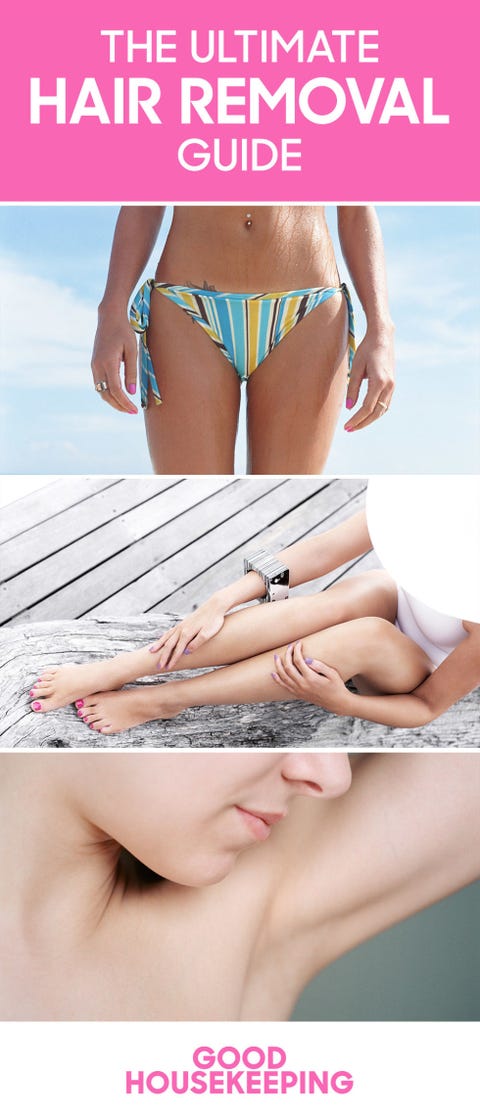No matter the time of year, many people want the look and feel of silky-smooth skin. But when it comes to hair removal, the Good Housekeeping Institute Beauty Lab has found different products and techniques for all areas of your body – from zapping underarm fuzz or coarse arm hair with laser hair removal to removing stubble around the bikini area with body hair removal creams and razors, defuzzing the face without irritation and more. Here’s everything you need to know to stay fuzz-free.
Start with top-tested hair removers
How to Remove Hair From Your Bikini Line
If you want to feel extra smooth around your bikini line, you’ve got a few options:
✔️ Shaving: While it’s not a particularly long-lasting method, shaving is typically pain-free and you can do it in the comfort of your own home. To avoid dreaded razor burn and sidestep simple shaving mistakes, Los Angeles dermatologist Christine Choi Kim, M.D. recommends waiting until your skin is hydrated from the shower or bath, then shaving. Soften first with shaving cream, foam or oil to guard skin and improve glide, rinse the razor’s blades often to unclog and replace them about every two weeks for maximum safety and efficacy, the GH Beauty Lab recommends.
Our pros road-tested the Gilette Venus trimmer and found it a great option: “It trims hair without pulling or tugging at 90 degrees and shapes the hairline when flat,” says GH Institute Beauty Lab Senior Chemist Sabina Wizemann. You can also opt for a bikini trimmer or an electric shaver designed specifically for delicate areas. Dr. Kim also suggests applying Tend Skin skin-calming treatment if you tend to get ingrown hairs or razor bumps easily.
✔️ Waxing: If a long-lasting method is the number one on your priority list, a bikini wax may be your best option. “It lasts around three to six weeks,” says Noemi Grupenmager, founder of Uni K Wax. “The hair in the bikini area tends to be coarse and thick, which is ideal for waxing,” says Katherine Goldman, owner of Strip Bar Wax in San Francisco. “And since the hair is pulled out from the root, it grows back thinner over time.” There are multiple types of wax, including strip wax (applied hot and removed with cloth or paper sheets) and hard wax (applied hot, then removed after cooling and hardening). If you prefer to use an at-home wax removal kits, the Beauty Lab’s most recent tests found MyHare wax strips the best in its category. Many testers enjoyed that it offered a strong grip and usually removed all of the hair in one pass. The GH Beauty Lab advises making sure skin is completely dry before waxing (try soaking up moisture with baby powder if needed).
✔️ Epilating: For those experienced waxers, an epilator may be the next step up in bikini line hair removal. This handheld, electrical device pulls unwanted hair from the root using a rotating head equipped with numerous tweezers. Epilating can keep skin smoother for longer, helps hair grow back more slowly and finer than before and works well on shorter regrowth. The one drawback? There’s a certain degree of pain to it. For beginners, we recommend the Lab-tested option from Braun below. The flexible head makes it easier to navigate while its included bikini shaver and comb attachment give a very close trim.
✔️ Electrolysis: If you’re looking for a way to permanently remove body hair, this laser tool is an FDA-approved method that can remove hairs for long periods of time. It can be used anywhere on the body, but it’s most commonly used to prevent hair growth on the bikini line and underarms, according to Michele Green, M.D., a board-certified cosmetic dermatologist. Electrolysis hair removal includes inserting a thin wire into the hair follicle where an electric current destroys the hair root, she adds. This stops the hair follicle from growing hair, and the existing hair should fall out.
How to Remove Hair From Your Legs
✔️ Shaving: If you don’t mind dedicating a bit of time to it every few days (depending on how quickly your hair grows), this is a great option. Heidi Waldorf, M.D., director of laser and cosmetic dermatology at Mount Sinai Hospital in New York City, advises using a sharp razor as well as a moisturizing foam, cream, gel or oil, like the best overall pick from our best body oil roundup. The Athena Club Razor Kit won top scores in our tests for shaving in one pass and reaching those tricky spots.
✔️ Sugaring or waxing: If you have a higher pain tolerance and prefer to keep regrowth at bay, consider waxing, as it normally lasts between three and six weeks. But if you’re a fan of waxing, our pros suggest checking out sugaring. Commonly used as a DIY natural hair removal paste, sugaring’s mixture of sugar, lemon and water work well on the face, underarms, arms and bikini area, but especially the legs. Both sugaring and waxing effectively remove unwanted hair, but the difference is that sugaring uses a natural combo “while waxing uses beeswax, resin, oils and other additives,” Dr. Green says. “Based on the ingredients alone, sugaring is a better option since [wax] additives have a higher chance of causing skin irritation,” which makes sugaring the “better option” for those with sensitive skin, “since most people find the procedure less irritating and painful,” says Dr. Green. Apply against the hair growth, so that it removes with the hair growth. The GH Beauty Lab’s most recent waxing Lab test found a winner in Nad’s Natural Sugar Wax, impressing with its gentleness, hair removal and pleasant after scent.
✔️ Depilatory cream: You may recall the potent-smelling formulas of years past, but new and improved concoctions promise to be less irritating and more nose-friendly, like the GH Beauty Lab’s top-tested pick by Nair below. Our testers enjoyed its simple instructions and easy application. It also scored high for its non-irritating and nicely scented formula. “Depilatory creams use chemicals such as calcium thioglycolate or potassium thioglycolate, which break disulfide bonds in keratin, thereby weakening the hair,” Dr. Kim explains. Just be sure to do a patch test before applying one of these to your skin, and don’t leave it on for longer than the instructions direct, the Beauty Lab recommends.
How to Remove Hair From Your Underarms
✔️ Shaving: Underarm hair grows almost 50% faster than the hair on your legs, according to the experts who make Gillette Venus razors, so shaving on a daily or an every-other-day basis makes sense for those who don’t want hair there. That said, some people do tend to be more sensitive than others and can get irritated from shaving, so make sure you’re always using a sharp razor and rinsing it between strokes to avoid it getting clogged. Our Beauty Lab pros love the Schick Hydro Silk 5 Razor, which excelled in removing underam, arm and leg hair, with a nice glide over skin. “If you’re prone to shaving bumps, use a shaving gel or lotion, shave in the direction of the hair, and change the blade often,” Dr. Waldorf says. “After shaving, apply over-the-counter hydrocortisone cream to any red or inflamed areas, or areas that frequently develop bumps.”
✔️ Waxing: Getting a quick wax every month or so can keep your underarm hair at bay without reaching for the razor every morning. Worried about little bumps? “If you wax regularly, you will have a very slim chance of getting them,” Grupenmager says. Consult a dermatologist if you’re still concerned about whether or not your underarm area can handle waxing.
✔️ Laser hair removal: This is a much longer-term method, but if you’re sure you’ll never again want hair in a specific spot, such as your underarms, it could be worthwhile to consider it. “By getting rid of 70 to 90% of the hair, if not more, you reduce or remove the necessity of hair removal,” Dr. Waldorf explains. Darker hair types will get the most from this treatment as laser hair removal machines detect hair based on pigmentation or melanin within the hair follicle while leaving the surrounding skin untouched, says Dr. Green. Expect results in four to eight sessions. Even though it’s on the pricier side (approximately $50 to $300 per session, depending on the body part), you could wind up cost-cutting on razors, shaving cream and waxing.
✔️ Electrolysis hair removal: Unlike laser hair removal, electrolysis targets all hair colors, even light-colored ones, offers generally fewer side effects and is safer for all skin tones and types. There are also smarter advancements in electrolysis lasers that better protect the skin from damage, Dr. Green says. The downside: It is extremely time-consuming and can be quite costly. “Electrolysis typically requires eight to 12 sessions … depending on the area being treated,” she adds. We tested the below at-home Smooth Skin tool, and our Beauty Lab experts saw noticeable results after a single-use. Plus, hair grew back slower and softer.
How to Remove Hair From Your Arms
✔️ Shaving: Like most areas of the body, using a razor is a fail-safe. Remember to shave on post-shower skin for the best glide. Plus, shaving cream, foam or oil helps soften hair follicles. No matter how infrequently you shave, it’s best to replace blades about every two weeks for maximum safety and efficacy, as recommended by the GH Beauty Lab.
✔️ Waxing: Unlike wax strips, spreadable wax from a pot can be heated in a microwaveable bowl, require minimal effort and can be used at home, perfect for use on the arms. Over time, waxing can result in your hair growing back finer, extending intervals between hair-removal sessions. Just be sure to trim your hair beforehand (leaving between 1/4″ and 1/2″ is perfect) and dust on a bit of baby powder to prevent the wax from sticking to your skin. Follow the directions properly, and remove any residual wax with a dab of baby oil on a cotton ball.
✔️ Depilatory cream: If you want a longer-lasting result than shaving and something less painful than waxing, try an easy-to-use depilatory cream on your arms, like the Beauty Lab’s top-tested pick below. Depilatory creams are great for on larger areas since they use chemicals that break down the bonds in your hair.
How to Remove Hair From Your Face
✔️ Tweezing: This time-old method is the easiest and most accessible way to remove small hair around your brows and chin by removing stray hairs by the root. Above all, our Beauty Lab pros say it’s important to wipe tweezer tips before and after every use with rubbing alcohol and a cotton pad, not soap and water. Storing it in a protective pouch helps keep the facial tool in tip-top shape.
✔️ Waxing: When hair grows back thicker and coarser than you’d like, facial waxing can help tame unruly hairs, especially on large areas like sideburns or cheeks, and a practitioner can remove hairs from your upper lip, cheeks, brows and chin with ease. You can use either soft wax, which is pulled off with cloth strips, or hard wax that simply hardens and is pulled off on its own. Sensitive skin types should be wary as waxing can irritate skin.
✔️ Shaving: Dermaplaning, whether done by a professional or with at-home dermaplaning tools, removes peach fuzz and exfoliates skin by using a single blade to scrape hair off at the surface of the skin. Contrary to popular belief, it’s a myth that your hair will grow coarser and more densely after shaving, Lavanya Krishnan, M.D., a dermatologist based in San Francisco, told us in our facial hair removal guide. “The follicle gets cut in half so it feels pricklier, but it’s not any thicker.”
✔️ Threading: Commonly used for eyebrow shaping, upper lip and cheeks, this precise method involves using a thin, doubled cotton thread pulled super-taut to roll over spots and pull hairs out by the root. Unlike using tweezers, threading is a much trickier trade, so head to a salon with a professional who specializes in it for the best results.
✔️ Depilatory cream: Though generally used on larger areas like legs and arms, there are some facial hair removal creams out there that melt away unwanted facial hairs and wipe away with ease. This is one of the most painless forms of hair removal except for some mild tingling or redness as the hair melts away. If you have very sensitive skin, you may benefit from a patch test first to check for any allergies.
✔️ Epilating: A major step up from tweezers, epilation devices pluck out multiple hairs by the root at once — great for snagging errant hairs between waxes. It’s typically used on larger areas, so stick to using this on your chin and side of the face. Our Beauty Lab strongly advises against using this to shape your eyebrows, as it doesn’t give a precise cut.
✔️ Laser hair removal: For a more permanent option, laser hair removal helps kill hair follicles and prevent them from growing back. This route is typically costlier and requires multiple sessions to achieve total hair removal. At-home laser hair removal tools are popular can be tricky and it come with risks, so we recommend leaving it to a professional.
✔️ Electrolysis: For finer hair types who don’t qualify for laser hair removal, electrolysis has got you covered. This permanent hair removal helps rid the upper lip, chin and other small areas of hair growth. Its concentrated heat destroys each follicle one at a time. Like at-home laser hair removal, it comes with similar risks, so it’s best to get this procedure done in a professional, sterile setting.
Bookmark This Guide!
Add this graphic to your Pinterest beauty board so you can always come back to this post!
This content is created and maintained by a third party, and imported onto this page to help users provide their email addresses. You may be able to find more information about this and similar content at piano.io


